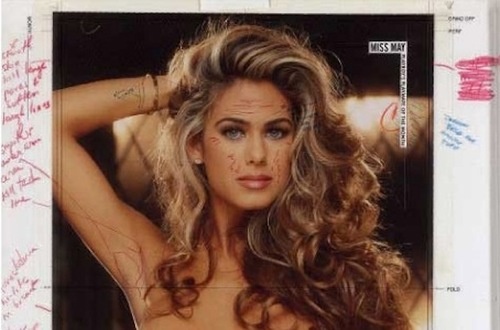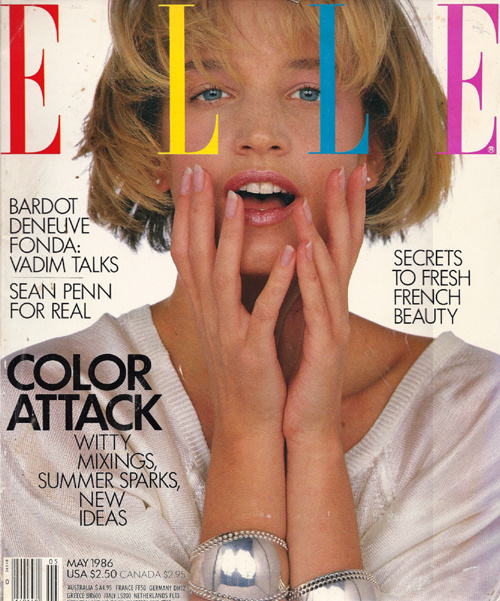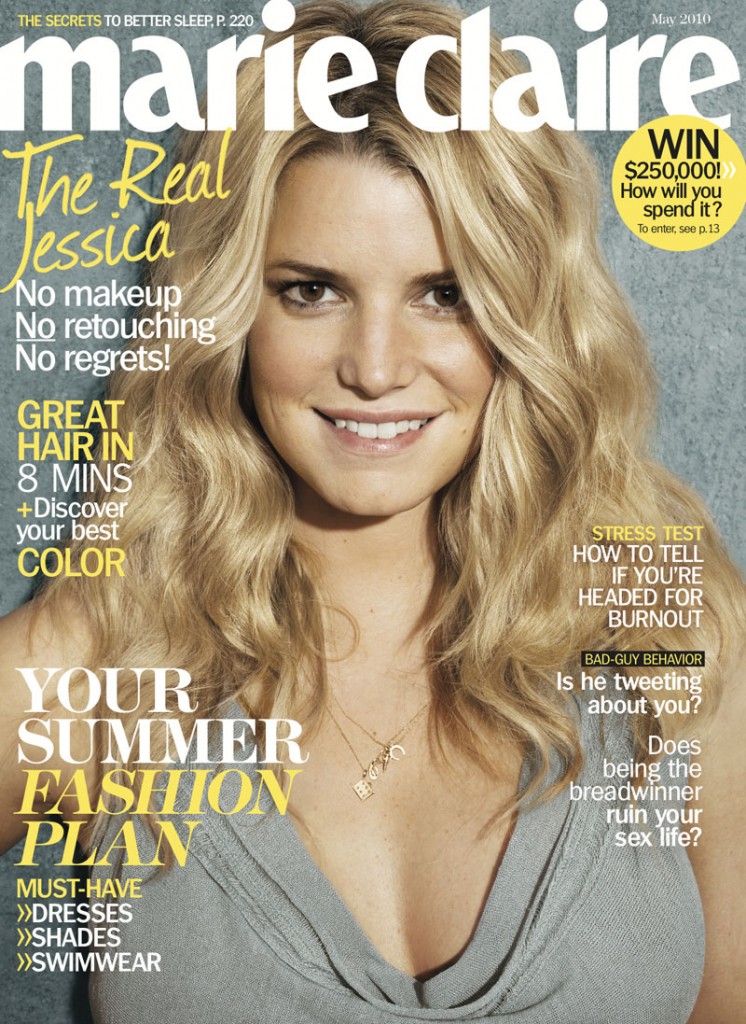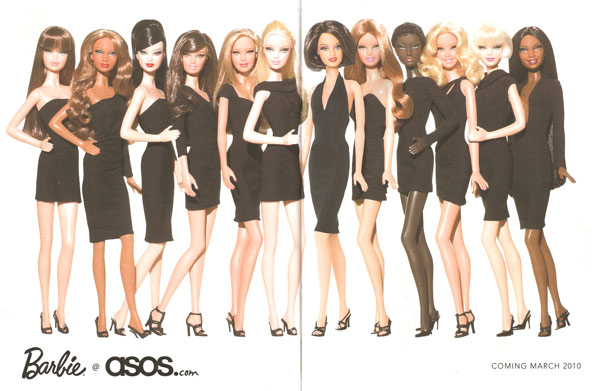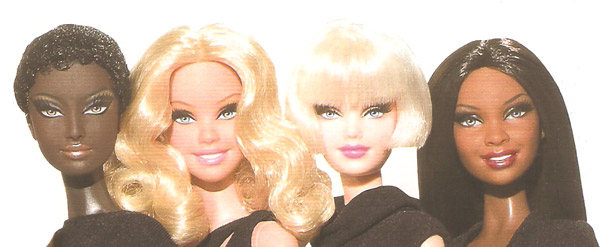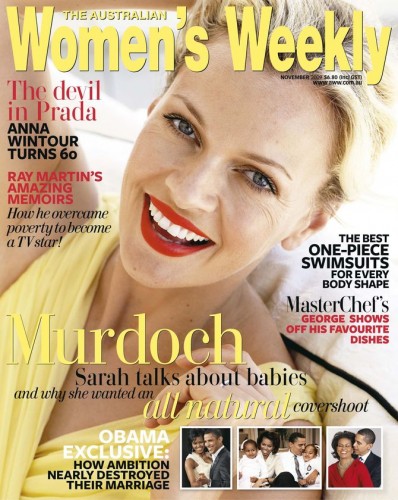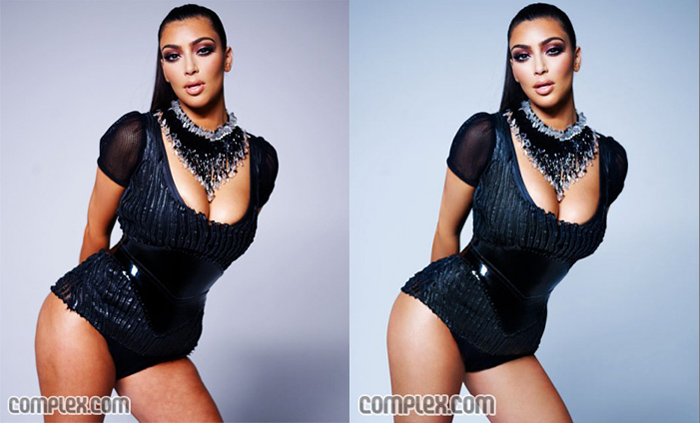Dmitriy T.M. sent in a post by Irin Carmon at Jezebel about Playboy memorabilia up for auction, including images of centerfolds with editorial comments for the Photoshopper to fix various problematic aspects of the photos. The marked-up images gives us a peek into the process of creating a centerfold, as well as the scrutiny applied to literally every aspect of the models’ bodies, which are found wanting in a dizzying array of ways, with their blatant imperfections resulting from being actual living humans.
This one includes instructions to fix her large pores and soften her laugh lines (see the top left):
The rest of these images are *definitely* Not Safe for Work, so beware:

